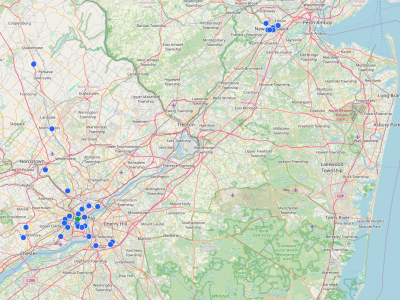If I’m honest with myself, I don’t really need access to an off-grid, fault-tolerant, mesh network like Meshtastic. The weather here in New Jersey isn’t quite so dynamic that there’s any great chance the local infrastructure will be knocked offline, and while I do value my privacy as much as any other self-respecting hacker, there’s nothing in my chats that’s sensitive enough that it needs to be done off the Internet.
But damn it, do I want it. The idea that everyday citizens of all walks of life are organizing and building out their own communications network with DIY hardware and open source software is incredibly exciting to me. It’s like the best parts of a cyberpunk novel, without all the cybernetic implants, pollution, and over-reaching megacorps. Well, we’ve got those last two, but you know what I mean.

Even though I found the Meshtastic concept appealing, my seemingly infinite backlog of projects kept me from getting involved until relatively recently. It wasn’t until I got my hands on the Hacker Pager that my passing interest turned into a full blown obsession. But it’s perhaps not for the reason you might think. Traveling around to different East Coast events with the device in my bag, it would happily chirp away when within range of Philadelphia or New York, but then fall silent again once I got home. While I’d get the occasional notification of a nearby node, my area had nothing like the robust and active mesh networks found in those cities.
Well, they say you should be the change you want to see in the world, so I decided to do something about it. Obviously I wouldn’t be able to build up an entire network by myself, but I figured that if I started standing up some nodes, others might notice and follow suit. It was around this time that Seeed Studio introduced the SenseCAP Solar node, which looked like a good way to get started. So I bought two of them with the idea of putting one on my house and the other on my parent’s place down the shore.
The results weren’t quite what I expected, but it’s certainly been an interesting experience so far, and today I’m even more eager to build up the mesh than I was in the beginning.
















